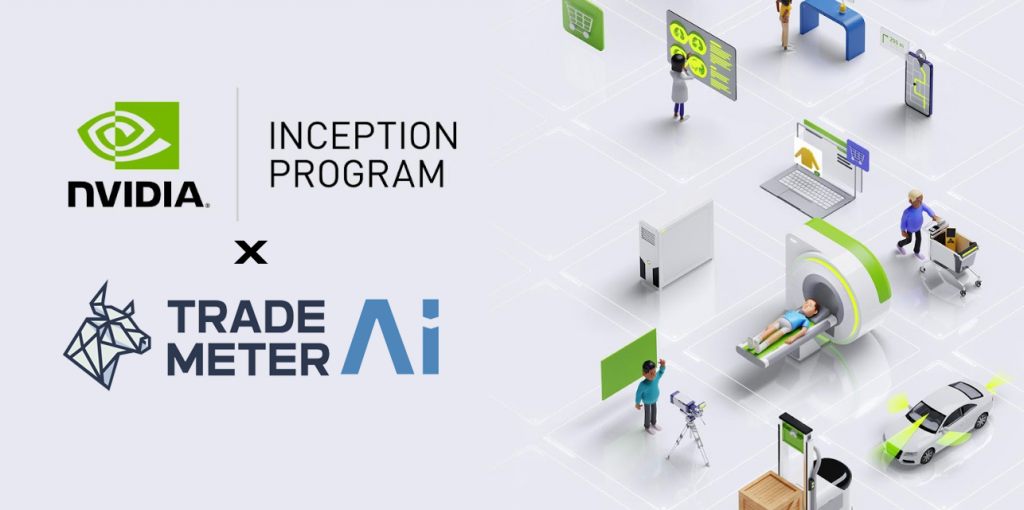Top 10 Tips For Starting Small And Scaling Up Gradually For Trading In Ai Stocks From Penny To copyright
Start small, and then gradually expand your AI trades in stocks. This method is perfect for navigating high risk situations, like the penny stocks market and copyright markets. This helps you get experience, develop your algorithms and manage risk efficiently. Here are 10 tips to help you expand your AI stock trading operation gradually.
1. Start with a Clear Plan and Strategy
Before starting, you must establish your trading goals such as risk tolerance, market segments you wish to enter (e.g. the copyright market, penny stocks) and define your trading goals. Begin by focusing on only a small portion of your portfolio.
Why: Having a well-defined business plan will aid you in making better choices.
2. Test out Paper Trading
Tips: Begin by using paper trading (simulated trading) with real-time market data without risking real capital.
The reason: You can test your AI trading strategies and AI models in real-time market conditions, without any financial risk. This will help you determine any issues that could arise prior to scaling up.
3. Pick a low cost broker or Exchange
Tips: Select an exchange or broker which offers low-cost trading and also allows for fractional investments. This is a great option when first investing in penny stocks or other copyright assets.
Examples for penny stocks: TD Ameritrade, Webull E*TRADE.
Examples of copyright: copyright copyright copyright
The reason: reducing commissions is crucial in less frequently.
4. Focus on one asset class initially
Tips: Concentrate your study on a single asset class at first, such as penny shares or copyright. This will cut down on amount of work and make it easier to concentrate.
What’s the reason? By making your focus on a single market or asset, you’ll be able to lower the learning curve and develop expertise before expanding to new markets.
5. Utilize small size positions
Tip Make sure to limit the size of your positions to a small percentage of your portfolio (e.g., 1-2% per trade) to limit exposure to risk.
Why? This helps you reduce losses while fine-tuning your AI model and gaining a better understanding of the market’s dynamic.
6. As you build confidence you will increase your capital.
Tip: If you’re consistently seeing positive results for a few weeks or months then gradually increase your trading funds, but only in the event that your system is showing reliable results.
The reason: Scaling gradually lets you build confidence in your trading strategy and risk management before making bigger bets.
7. Priority should be given to an easy AI-model.
Tip: To predict the price of stocks or copyright Start with basic machine-learning models (e.g. decision trees linear regression) prior to moving on to more advanced learning or neural networks.
The reason is that simpler models are easier to understand, maintain, and improve, which is helpful to start small when getting familiar with AI trading.
8. Use Conservative Risk Management
TIP: Use moderate leverage and strict risk management measures, including strict stop-loss orders, a position size limit, and strict stop-loss rules.
Why: Risk management that is conservative prevents you from suffering large losses in the early stages of your trading career and also allows your strategy to expand as you progress.
9. Returning the profits to the system
TIP: Instead of cashing out early profits, reinvest them to your trading system to improve the model or scale operations (e.g., upgrading equipment or increasing capital for trading).
Reason: By investing profits, you can increase gains and upgrade infrastructure to support larger operations.
10. Make sure you regularly review and improve your AI Models Regularly and Optimize Your
TIP: Always monitor the AI models’ performance and improve the models using up-to-date algorithms, more accurate data or improved feature engineering.
The reason: Regular model optimization enhances your ability to forecast the market while you build your capital.
Bonus: Think about diversifying after Building a Solid Foundation
Tip: After you’ve built a solid foundation and your system has consistently been profitable, you might think about adding other asset classes.
The reason: By giving your system the chance to make money from different market situations, diversification can lower the risk.
Start small and scale slowly, you will be able to learn how to adapt, establish an investment foundation and attain long-term success. See the most popular best ai penny stocks recommendations for site examples including ai investing, ai stock trading app, ai investing app, penny ai stocks, trading with ai, copyright predictions, ai stock, ai stocks to invest in, incite ai, artificial intelligence stocks and more.

Top 10 Tips On Updating Ai Models, Making Predictions & Investments
The regular updating and optimization of AI models for stock picking forecasts, investments, and other investment strategies is crucial for maintaining the accuracy of your models, being able to adapt to market changes and enhancing overall performance. The market evolves in time, and so should your AI models. Here are 10 tips to help you optimize and update your AI models.
1. Continuously integrate new market data
TIP: Make sure to regularly incorporate the latest market data, including earnings reports, stock prices, macroeconomic indicators, and social sentiments, to ensure that your AI model stays relevant and accurately reflects the current market situation.
AI models are susceptible to becoming obsolete without new data. Regular updates improve your model’s precision, predictability, and responsiveness by keeping it in sync to the latest trends.
2. Monitor model performance in real-time
You can utilize real-time monitoring software to track the way your AI model performs in the market.
Why: Monitoring your performance can help you detect issues such as the model’s performance deteriorating (when accuracy decreases for a model over time) This gives the possibility of intervention and adjustments prior to major losses.
3. Retrain the models on periodic basis, using up-to-date data
Tips Retrain AI models with historical data on regularly (e.g. monthly or quarterly) to enhance the model.
What’s the reason? Market conditions change, and models trained on old data may be inaccurate in their predictions. Retraining the model allows it to be able to learn from current market trends and patterns, which makes sure that it is still effective.
4. Adjusting Hyperparameters to Improve Accuracy
Tips: Regularly optimise the hyperparameters of the AI models you use (e.g., learning rates, numbers or layers, etc.). You can optimize AI models using grid search random search, grid search, or other methods.
The reason is that proper adjustment of hyperparameters helps to improve prediction accuracy and avoid underfitting or overfitting with the historical data.
5. Explore New Features and Variables
TIP: Continuously test new features and data sources (e.g. sentiment analysis, social media posts, alternative data sources) to improve the accuracy of model predictions and uncover possible correlations or insight.
Why? Adding more pertinent elements to the model can increase its accuracy by allowing it access to more nuanced information and insights.
6. Utilize ensemble methods to improve predictions
Tip. Utilize ensemble learning methods like bagging (combining multiple AI models) and stacking (combining multiple AI models) to improve accuracy in prediction.
Why Ensemble models boost the robustness the accuracy of your AI models. By leveraging the strengths and weaknesses of different models, they decrease the likelihood of making incorrect predictions due to the weaknesses of a single model.
7. Implement Continuous Feedback Loops
Tip: Set up a loop of feedback that allows for real market results, as well as models predictions are reviewed to improve the model.
The reason: Feedback loops ensure that the model is able to learn from actual performance, allowing to identify any weaknesses or errors that require correction, and refine future predictions.
8. Include regular stress testing and Scenario Analysis
TIP: Continually stress-test your AI models with hypothetical market conditions, like extreme volatility, crashes or unexpected economic events, to test their robustness and capability to cope with unpredictable scenarios.
The reason: Stress testing makes sure that the AI model is ready for unusual market conditions. It helps to identify flaws which could cause the AI model to perform poorly in extremely turbulent or extreme market conditions.
9. AI and Machine Learning: What’s New?
Tips: Stay up-to-date with most recent AI methods tools, algorithms and tools. Experiment by incorporating newer techniques into your models (e.g. the use of transformers or reinforcement learning).
What is the reason? AI is a field that is constantly changing. Leveraging the latest developments will result in better model performance, efficiency, accuracy, and stock picks and predictions.
10. Always evaluate, adjust and Manage Risk
Tip: Assessing and refining the risk management elements of your AI model regularly (e.g. stopping-loss strategies and position sizing, risk-adjusted returns).
Risk management is essential in the stock market. Your AI model will be evaluated periodically to ensure it is optimised not just for return but also to manage the risk associated with changing market conditions.
Bonus Tip: Monitor the mood of the markets and incorporate into model updates
Integrate sentiment analyses (from news, social networks, etc.). Incorporate sentiment analysis (from news or social media.) into your model updates so that it can be adapted to changes in the psychology of investors and market mood.
Why: Market sentiment may greatly affect the price of stocks. When you incorporate the concept of sentiment analysis into your models it is possible to react to market mood changes or emotional states that aren’t detected by traditional data.
We also have a conclusion.
It is possible to keep your AI model up-to-date, accurate and adaptable by continuously changing, optimizing and improving the AI stock picker. AI models that are constantly retrained, are fine-tuned and updated with new data. Additionally, they incorporate real-time feedback. View the best ai day trading examples for site info including best stock analysis website, best ai stock trading bot free, ai investing app, ai trading software, best ai trading bot, ai stock, ai for trading, best ai trading app, ai stock predictions, ai stocks and more.
